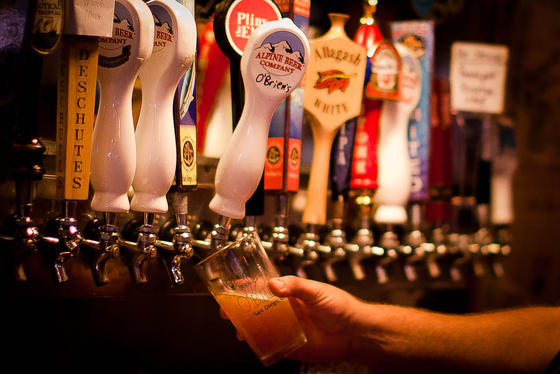When was the last time you were in a craft beer bar in San Diego and ordered a Sierra Nevada Pale Ale or a Sam Adams?
The answer to this question has a direct impact on the recent industry-wide reporting of the lag in craft beer sales. Marketing firm, IRI International, released a report on overall craft beer sales for the first half of 2016 and after years of unencumbered growth, craft beer sales have finally begun slowed down. Brewbound reported that craft beer sales were up 6.5% from this year over last year and while that doesn’t sound too bad, it’s concerning when it’s compared to the 17% growth at this time last year. That’s a serious difference, but craft beer lovers shouldn’t begin hoarding their favorite brews just yet. When the numbers are looked at closely, a different story emerges. There are two main reasons why this decline shouldn’t worry the average craft beer drinkers.
1. Extreme Growth Can’t Last Forever
According to the Brewer’s Association’s article, “slower growth is a natural part of category maturation.” With more breweries, comes more competition as craft beers takes a hold on mainstream retail channels. Yes, we had a few years of double digit growth but as an industry matures it’s normal for that extreme growth to slow down.
2. Big vs. Small Craft Breweries
This is the crux of the numbers released because when you really look at the industry as a whole, one can see that the biggest craft beer brands are the ones that are struggling. Sam Adams, Sierra Nevada, New Belgium Fat Tire, Blue Moon and Shock Top all reported a decline in sales. First, we would argue that Shock Top and Blue Moon shouldn’t be considered in the number at all because they are owned by AB-InBev and Coors, respectively. Once you take them out of the equation, growth goes up to 8.9%, from the 6.5% that was reported. In fact, these big dogs are to blame for most of the slow down. 15 out of the top craft brands were in decline and six of those 15 brands are in the middle of double digit declines in volume. This has a significant impact on the reported number because their huge sales impact that number heavily.
What this all means is that although there is some slow down in the growth of craft beer, it’s mostly because the bigger craft beer companies are impacting those numbers.
Simply put, craft beer consumers are becoming more discerning with what beer they choose to drink. People that used to reach for a Sierra Nevada Pale Ale are now reaching for smaller brewery brands. It’s interesting because these bigger companies most certainly paved the way for the breweries that came after, but once craft beer drinkers are introduced to all of these smaller, and some might argue, more innovative breweries, they seem to choose to spend their dollars on these brands.
The report wasn’t all doom and gloom. Not only did they find that IPAs are up 28.5 % year to date from last year, but also Vermont-based, Lawson’s Sip of Sunshine IPA (which is a personal, cross-country favorite), entered the list of top 30 brands in sales in convenience stores, selling more than $2.3 million in beer year-to-date. When is it going to come to the West Coast?!? People are still drinking craft beer and are focusing on quality, small breweries, like Lawson’s.
So don’t believe the hype that craft beer has reached it’s saturation point. There is plenty of growth still available for innovative, smaller craft breweries, and that’s good news for everyone!
Anna Brigham
6/29/16



